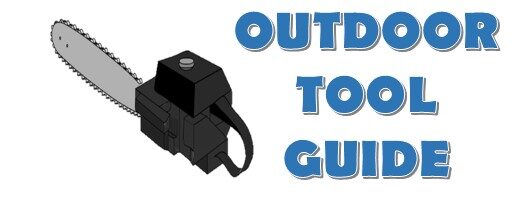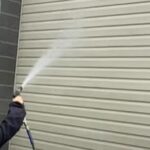As an Amazon Associate, this site earns commissions from qualifying purchases. For more information click here.
When it comes to cleaning the exterior of your home, pressure washers have become an increasingly popular tool for homeowners. These powerful machines use high-pressure water streams to remove dirt, grime, mold, and other stubborn stains from various surfaces. However, with pressure washers available in a wide range of power levels, from gentle 1200 PSI units to heavy-duty 4000+ PSI commercial models, many homeowners find themselves asking a crucial question: is a 3000 PSI pressure washer too much for residential use?
The answer isn’t a simple yes or no. While a 3000 PSI pressure washer can certainly be used on homes, it requires careful consideration of your house’s materials, proper technique, and a thorough understanding of what surfaces can handle that level of pressure. When used correctly, a 3000 PSI unit can be highly effective for certain cleaning tasks, but when misused, it can cause significant and costly damage to your property.
Understanding Pressure Washer PSI Ratings
Before diving into whether 3000 PSI is appropriate for your house, it’s essential to understand what PSI actually means and how it affects cleaning performance. PSI stands for pounds per square inch, which measures the force of water hitting a surface. However, PSI is only part of the equation when it comes to cleaning power. The flow rate, measured in gallons per minute (GPM), is equally important. Together, PSI and GPM determine the overall cleaning units (CU) of a pressure washer, calculated by multiplying PSI by GPM.
Most residential pressure washers fall within the 1300 to 3200 PSI range. Light-duty models typically operate between 1300 and 1900 PSI, medium-duty units range from 2000 to 2800 PSI, and heavy-duty residential models can reach 2900 to 3200 PSI. The nozzle you choose also plays a critical role in determining the effective pressure delivered to the surface, with 0-degree nozzles concentrating maximum force and 40-degree nozzles spreading the pressure over a wider area.
Typical PSI Recommendations for Different House Surfaces
Different exterior surfaces require different pressure levels to clean effectively without causing damage. Understanding these requirements is crucial for determining whether a 3000 PSI pressure washer is appropriate for your specific cleaning needs.
Vinyl siding, one of the most common exterior materials, typically requires between 1300 and 1600 PSI for effective cleaning. This relatively low pressure is sufficient to remove dirt, mildew, and most stains while avoiding damage to the siding’s surface or forcing water behind the panels. Using 3000 PSI on vinyl siding, especially with a narrow nozzle, can cause cracking, warping, or create gaps that allow water infiltration.
Wood siding and decking are even more delicate, generally requiring pressures between 1200 and 1500 PSI. Wood fibers can be easily damaged by excessive pressure, leading to gouging, splintering, or a fuzzy appearance that actually makes the surface more susceptible to dirt and moisture retention. The age and condition of the wood also affect how much pressure it can withstand.
Brick and concrete surfaces are much more durable and can typically handle pressures up to 3000 PSI. These materials are dense and non-porous enough to withstand higher pressures, making a 3000 PSI unit potentially appropriate for cleaning brick walls, concrete foundations, and similar surfaces. However, care must still be taken around mortar joints, which may be softer than the brick itself.
Driveways and walkways made of concrete or sealed pavers can often handle 3000 PSI or higher, making this pressure level excellent for removing oil stains, tire marks, and deeply embedded dirt. The horizontal orientation and typically robust construction of these surfaces make them ideal candidates for higher-pressure cleaning.
Windows and delicate trim work require much gentler treatment, typically no more than 1000 to 1500 PSI. Even at these lower pressures, care must be taken to avoid forcing water past window seals or damaging decorative elements.
Roofing materials present special challenges and generally require professional assessment. Most residential roofing materials, including asphalt shingles, clay tiles, and metal roofing, can be damaged by high-pressure washing and may require specialized soft-washing techniques instead.
When 3000 PSI Is Appropriate for Houses
Despite the cautions mentioned above, there are several scenarios where a 3000 PSI pressure washer is not only appropriate but potentially necessary for effective cleaning. Heavy-duty cleaning tasks often require this level of pressure to achieve satisfactory results. When dealing with concrete surfaces, brick walls, or stone foundations that have accumulated years of dirt, algae, or staining, lower-pressure units may simply not provide adequate cleaning power.
Preparation for painting or refinishing projects often benefits from higher-pressure cleaning. Removing loose paint, embedded dirt, and surface contaminants is crucial for proper paint adhesion, and 3000 PSI can be highly effective for this purpose when used with appropriate techniques and nozzles.
Stubborn organic growth, such as thick mold, mildew, or algae, sometimes requires higher pressure to remove completely. While soft-washing with detergents is often preferred for these issues, there are cases where the mechanical action of higher-pressure water is necessary to break through tough organic films.
Commercial or industrial-style buildings with more robust construction materials may be specifically designed to handle higher-pressure cleaning. Metal siding, concrete block construction, and other commercial-grade materials often require and can safely withstand 3000 PSI cleaning.
Risks of Using Too Much Pressure
Understanding the potential consequences of using excessive pressure is crucial for making informed decisions about pressure washer selection and use. Surface damage is perhaps the most obvious risk, manifesting as gouging in wood, cracking in vinyl siding, broken windows, or damaged decorative elements. Such damage is often irreversible and can be expensive to repair.
Water intrusion represents a more insidious problem that may not be immediately apparent. High pressure can force water behind siding, into wall cavities, around windows, or into other areas where moisture can cause long-term damage such as rot, mold growth, or structural deterioration. This type of damage may not become evident until weeks or months after the pressure washing.
Personal injury is a serious concern when using high-pressure equipment. A 3000 PSI stream can cause cuts, bruises, or eye injuries if it contacts human skin. The powerful recoil from high-pressure nozzles can also cause users to lose control of the equipment, potentially leading to accidents.
Landscaping damage often occurs when homeowners focus on cleaning effectiveness while overlooking the impact on surrounding plants, outdoor furniture, or decorative elements. High-pressure water can strip bark from trees, damage delicate plants, or dislodge mulch and soil.
The cost-benefit analysis is also important to consider. While 3000 PSI might clean more effectively, the potential for expensive repairs may far outweigh the cleaning benefits, especially when lower-pressure alternatives could achieve similar results safely.
How to Safely Use a 3000 PSI Pressure Washer on a House
If you determine that a 3000 PSI pressure washer is appropriate for your specific cleaning needs, following proper safety and technique protocols is essential. Starting with wider spray patterns and maintaining greater distances from surfaces allows you to assess how different materials respond to the pressure before committing to closer, more intense cleaning.
Testing on inconspicuous areas should always be your first step. Choose a small section that’s not easily visible from the street or main viewing areas, and test your technique and pressure settings before proceeding to more prominent surfaces. This testing phase can reveal potential problems before they become costly mistakes.
Nozzle selection is critical when using higher-pressure equipment. For most house surfaces, 25 to 40-degree nozzles provide the best balance of cleaning power and surface protection. Avoid narrow nozzles (0 to 15 degrees) on most residential surfaces, as these concentrate the pressure into a very small area that can easily cause damage.
Maintaining proper distance is equally important. Starting at least 24 inches from the surface and gradually moving closer allows you to find the optimal cleaning distance for each material. Many surfaces will clean effectively at distances of 12 to 18 inches, but this varies based on the material, its condition, and the specific stains or dirt being removed.
Working from top to bottom ensures that loosened dirt and debris don’t re-contaminate areas you’ve already cleaned. This technique also helps prevent streaking and ensures more consistent results across the entire surface.
Protecting vulnerable elements before beginning is crucial. Cover electrical outlets, air conditioning units, outdoor lighting, and delicate plants. Remove or secure outdoor furniture, decorations, and anything else that could be damaged by high-pressure water or flying debris.
Alternative Approaches
For many homeowners, alternatives to high-pressure washing may provide better results with lower risk. If your pressure washer has adjustable pressure settings, starting with lower pressures and increasing only as needed can help you find the minimum effective pressure for each surface. This approach maximizes cleaning effectiveness while minimizing damage risk.
Soft washing techniques, which rely more on specialized detergents and lower pressures, can be highly effective for many cleaning tasks. These methods use surfactants, bleach solutions, or other cleaning agents to break down dirt and organic growth, requiring only gentle pressure to rinse away the loosened contaminants.
Professional pressure washing services often represent the best value for homeowners who need heavy-duty cleaning but lack the experience or equipment to do it safely. Professional operators have the knowledge to select appropriate pressures for different surfaces and the insurance to cover any accidental damage.
Equipment rental can be a cost-effective option for homeowners who only need pressure washing occasionally. Rental centers often have a variety of units available, allowing you to select the appropriate pressure level for your specific needs without the long-term commitment of purchasing equipment that might be overpowered for most of your cleaning tasks.
Conclusion
A 3000 PSI pressure washer is not inherently too much for house cleaning, but it does require expertise, caution, and careful consideration of your home’s specific materials and conditions. The key is matching the pressure to the cleaning task at hand rather than assuming that more pressure always equals better cleaning.
For most routine house washing tasks, including cleaning vinyl siding, wood surfaces, and general maintenance, lower-pressure units in the 1300 to 2000 PSI range will provide excellent results with significantly lower risk of damage. However, for specific applications such as concrete cleaning, heavy-duty stain removal, or commercial-grade surfaces, 3000 PSI can be both appropriate and effective.
The most important factor is prioritizing surface protection and safety over maximum cleaning power. Taking the time to understand your home’s materials, testing techniques on inconspicuous areas, and using proper equipment and methods will help ensure that your pressure washing efforts enhance your home’s appearance rather than causing costly damage. When in doubt, consulting with professionals or starting with lower pressures and working up gradually will help you achieve the cleaning results you want while protecting your investment in your home.

I love the outdoors and all the tools for maintaining gardens, yards and lawns. The only thing I am more passionate about is sharing what I know about garden and outdoor equipment.


